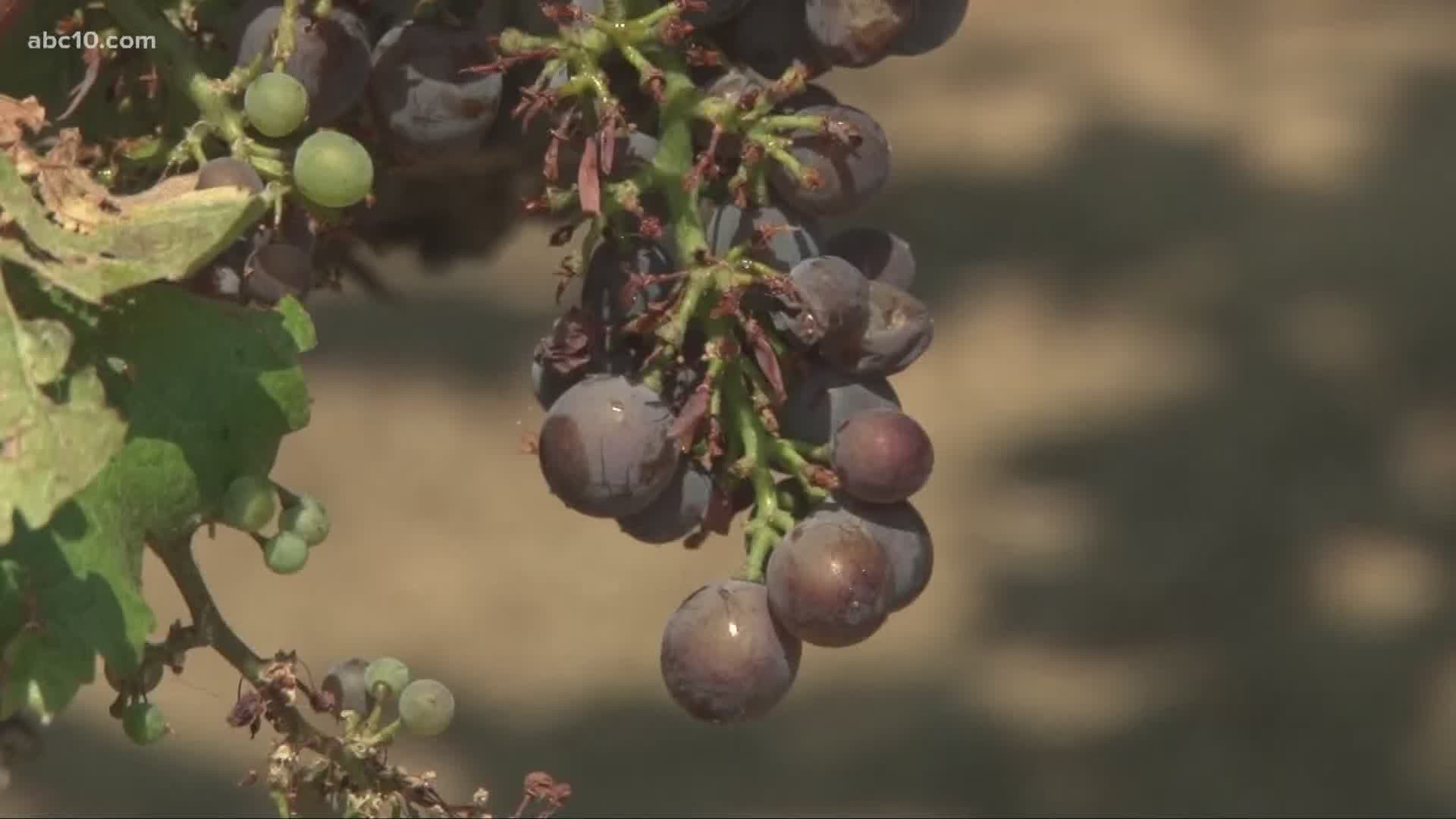LODI, Calif. — It’s harvest season in many parts of Northern California despite wildfires and smoke throughout the Central Valley. For farmers, these are just the latest obstacles in a year already full of hurdles.
“Monumental impact,” explained Bruce Blodgett, executive director of the San Joaquin Farm Bureau. “I mean if you look at those operations that are directly in line with the fires, if you think about the cattle operations that are losing their pastures right now, potentially losing animals. Those ranchers in the path are just simply seeing their entire feed for the rest of this summer being eliminated.”
Blodgett said nature doesn’t wait.
“If you have fruit that’s ripe, vegetables that need to be picked, whatever the case is, which is going on right now. Winegrapes that need to be picked, they need to be picked at the right time,” said Blodgett.
John Aguirre, president of the California Association of Winegrape Growers knows the exact challenges these fires pose.
“2020 has just been a complicated year,” admitted Aguirre.
He says following the trade disputes and the pandemic, now growers have fire and smoke to think about.
“That’s very challenging of course for people who have to evacuate their homes and businesses,” said Aguirre. “And also challenging because of the smoke that all of us can see. And that smoke affects wine country. Too much smoke for too long in a vineyard can affect grape quality.”
He said this can have an effect on the growers’ bottom line.
“There’s the potential that wineries won't’ accept grapes from growers. And that means losses for growers.”
He says winegrape growers are also very concerned about the health of their workers.
“When the air quality index hits 151, growers need to make these respirators available to their workers. When the AQI, air quality index, hits 500 or higher, wearing those respirators, those N95 masks, is mandatory.”
He says agricultural operations are lucky to have enough masks right now, but they always need more.

